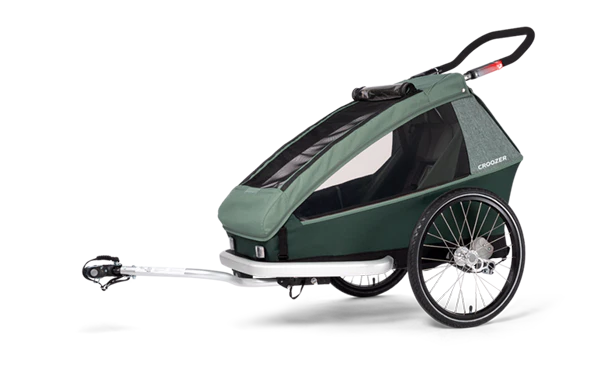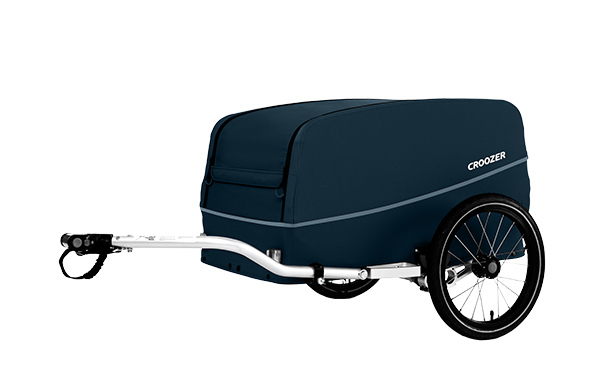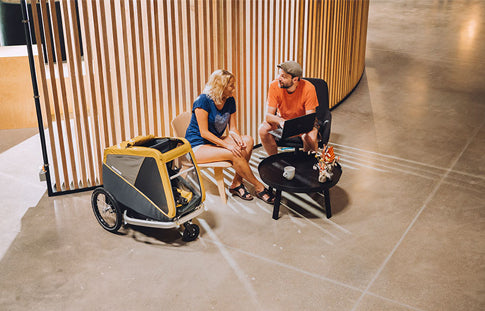BE IT HOT OR COLD WEATHER, YOUR CHILD WILL BE COMFORTABLE IN THE CLIMATEX® SEAT!
On hot days, children can quickly lose body fluids and become dehydrated. This is why we decided to look for a material that could adapt to a child’s body temperature and improve their comfort and well-being! The innovative and recyclable material CLIMATEX® met all of our expectations - the material adjusts to body temperature, keeping passengers cool in the summer and warm in the winter.
In addition, the fabric is 100% recyclable and Cradle to Cradle Certified (see below for more information). The backrest, seat and head pad of our Croozer Kid Vaaya children’s trailers are made from CLIMATEX® fabric, as well as our new CLIMATEX® baby seat.






















